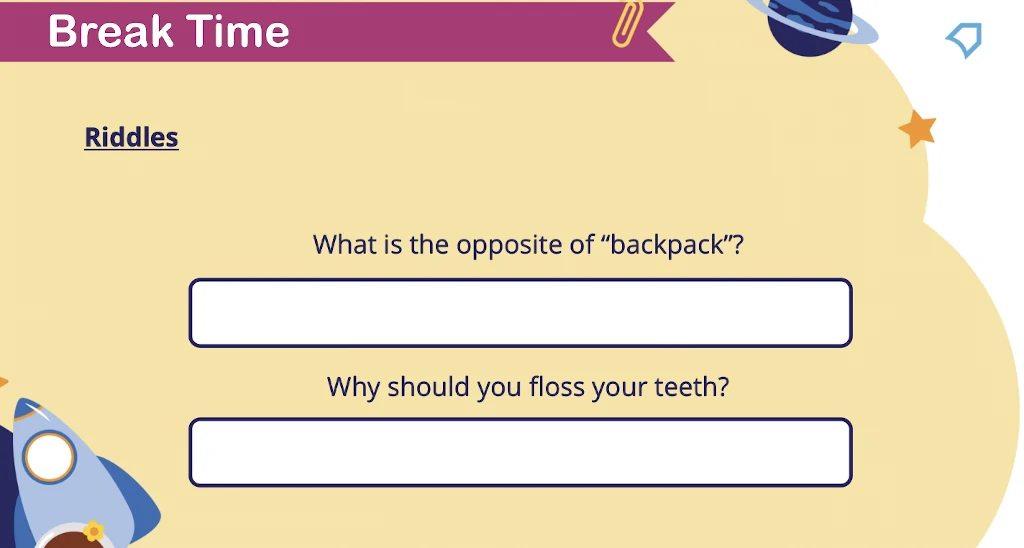Tính từ và trạng từ
In this topic of Adjectives and adverbs in writing, we will be covering:
- Adjectives describing nouns (things/people)
- Adverbs describing verbs (actions)
Note: Adverbs can describe other things as well (other adverbs, adjectives, and sentences) but we will not cover that in this topic.
English Concept - Part 1: Adjectives
Adjectives describe nouns
- Red apple
- Cute cat
- Sharp scissors
- You are intelligent
- That looks delicious
Words in bold are adjectives. In your writing, use the right adjectives, to describe characters and things. This will allow the reader to better imagine the story, which in turn will make them enjoy it more.
Question 1:
I want to describe a meal that looks and tastes good. Which of the following does that best?
- A bowl of rice with soup and vegetables
- A frozen bowl of rice with dirty soup and rotten vegetables
- A steaming bowl of rice with a clear soup and fresh vegetables
- A bowl of stale rice with smelly soup and wilted vegetables
Answer:
3) A steaming bowl of rice with a clear soup and fresh vegetables.
Explanation:
As you read through the options, clearly 2 and 4 are not the options. Dirty soup, rotten vegetables, and smelly soup do not describe a good meal. Option 1 is out too, as it's too boring and simple, there is no description.
So the correct answer is 3) A steaming bowl of rice with a clear soup and fresh vegetables.
Question 2:
I want to describe a person who looks strong. Which of the following does that best?
- He had narrow shoulders, no chest muscles, and flabby arms.
- He had hunched shoulders, a thin chest, and bony arms.
- He had narrow shoulders, a bony chest, and thin arms.
- He had broad shoulders, a muscular chest, and thick arms.
Answer:
4) He had broad shoulders, a muscular chest, and thick arms
Explanation:
All the adjectives used for nouns above, like narrow shoulders, no chest muscles, flabby arms, thin chest, and bony arms don’t describe a strong person.
So the correct answer is 4) He had broad shoulders, a muscular chest and thick arms.
Question 3:
I want to describe a monster that looks scary. Which of the following does that best?
- It had red eyes, sharp teeth, and a scaly body.
- It had friendly eyes, small teeth, and a furry body.
- It had tiny eyes, blunt teeth, and a smooth body.
- It had large eyes, shiny teeth, and a soft body.
Answer:
1) It had red eyes, sharp teeth, and a scaly body
Explanation:
All the adjectives used for the nouns above, like friendly eyes, furry body, blunt teeth, smooth body or soft body don’t describe anything monster-like.
So the correct answer is 1) It had red eyes, sharp teeth and a scaly body.
Question 4:
I want to describe a scenery that looks beautiful and relaxing. Which of the following does that best?
- There was a barren field, wilting flowers, and a dirty stream.
- There was a lush field, beautiful flowers, and a sparkling stream.
- There was an empty field, dying flowers, and a polluted stream.
- There was a dry field, pale flowers, and a murky stream.
Answer:
2) There was a lush field, beautiful flowers, and a sparkling stream
Explanation:
All adjectives used for nouns above, like barren field, wilting flowers, dirty stream, empty field, dry field, dying flowers, pale flowers, polluted stream, and murky stream don’t describe beautiful scenery.
So the correct answer is 2) There was a lush field, beautiful flowers, and a sparkling stream.

English concept - Part 2: Adverbs
Adverbs describe verbs:
- She moved gracefully.
- They sang beautifully.
- He crawled slowly.
- Can you please move quickly?
- You need to speak softly.
- The horse could run fast.
Adverbs allow you to give extra flavour to actions. Your reader can definitely still understand what you are saying without adverbs, but using them properly makes things more interesting.
Question 5:
Odd one out: Choose the adverb that cannot be used for the following sentence.
The choir sang _________.
- beautifully
- passionately
- sweetly
- hungrily
Answer:
4) hungrily
Explanation:
So we need to pick the weirdest description that does not go well with the verb sang. If we go through the options, beautifully, passionately or sweetly describe singing. But how do you sing hungrily?
So the correct answer is 4) hungrily
Question 6:
Odd one out: Choose the adverb that can not be used for the following sentence.
The scientist laughed _________.
- neatly
- hysterically
- heartily
- maniacally (muh - nye - uh - klee)
Answer:
1) neatly
Explanation:
Let’s explore all the options. So what are all the different ways can one laugh? :))
You may laugh hysterically or heartily or maniacally, but there is no way to laugh neatly.
So the correct answer is 1) neatly.
Question 7:
Odd one out: Choose the adverb that can not be used for the following sentence.
The chef prepared the food _______.
- quickly
- skillfully
- politely
- calmly
Answer:
3) politely
Explanation:
So let’s again look at all the adverbs which go well with preparing the food. A chef can prepare the food quickly (which they have to, most of the time ;) ) or skillfully or even calmly (as they have to feed so many customers at one time). But how can they prepare food politely?
So the correct answer is 3) politely.
Question 8:
Odd one out: Choose the adverb that can not be used for the following sentence.
The car hummed _______.
- noisily
- patiently
- quietly
- powerfully
Answer:
2) patiently
Explanation:
The car hums when its engine is switched on and it's standing and not moving. A car can hum noisily or quietly or powerfully, depending on the kind of car it is. But a car cannot hum patiently.
 SG
SG  VN
VN 










